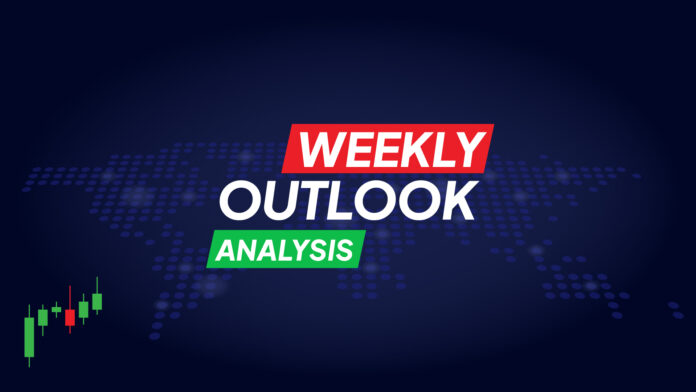Key Points to Watch Out For:
- Consumer and producer prices in the US take center stage
- Economic production data in the UK also warrants attention
- However, headlines about Trump and tariffs could have a greater market impact
Trump Stirs Up Markets with His Tariff Measures
With the first central bank decisions of 2025 now behind us, this week is expected to be calmer. However, there is still plenty for investors to anticipate, with the all-important US CPI report on the agenda.
This does not mean, of course, that President Trump will not once again become the center of attention for the markets. The tariff war has only just begun and is more likely to escalate rather than ease, while Republicans in Congress have begun working on how to finance an extension of the 2017 tax cuts, which are set to expire at the end of 2025 amid concerns over rising debt.
However, the Treasury Department has seen some relief due to the recent decline in Treasury bond yields. A slight slowdown in economic growth, signs that inflation is peaking, and Trump’s more conciliatory tone on tariffs have helped reduce long-term borrowing costs.
As a result, the US dollar has retreated from two-year highs against a basket of currencies. Further losses for the dollar could occur this week if the Consumer Price Index (CPI) shows an annual decline.
The US CPI Could Test the Resolve of Dollar Bulls
The overall CPI rate rose to 2.9% year-on-year in December, while the core rate fell to 3.2%. According to the Cleveland Federal Reserve’s inflation forecasting model, overall CPI is estimated to have moderated to 2.85% in January, with the core rate declining to 3.13%.
If the actual figures align with these forecasts, investors may interpret them as a sign that the disinflation process is back on track and that yields could continue to fall.
The CPI figures will be released on Wednesday, February 12, followed by the Producer Price Index (PPI) on Thursday, February 13. Factory prices in the US have risen in recent months, so a decline in PPI data will be crucial for a sustained decline in the dollar. Additionally, January retail sales will provide further guidance on Federal Reserve policy expectations, as strong consumer spending could partially offset any increase in rate cut bets.
Markets remain hesitant to fully price in two rate cuts by 2025, possibly due to the ongoing threat of higher tariffs. However, if upcoming data significantly boost expectations for more aggressive monetary easing, risk appetite could improve further, benefiting Wall Street.
The Pound Awaits UK GDP Update After Bank of England’s Rate Cut
The Bank of England (BoE) cut its benchmark interest rate by 25 basis points at its February meeting but maintained a cautious stance on the pace of future cuts. Concerns over high wage growth and the inflationary impact of the Labour government’s budget measures continue to weigh on policymakers’ decisions.
However, the BoE is equally concerned about the sluggish growth the economy has experienced since last summer. GDP barely grew in the third quarter of 2024, and while investors expect a slight improvement in the fourth quarter, estimates still indicate a minor contraction.
The first estimate of fourth-quarter GDP growth will be released on Thursday, February 13, alongside monthly readings on services, industrial production, and manufacturing output. Stronger-than-expected data could help the pound recover from the more than one-year low of $1.2097 recorded in January.
The pound has been less affected by market turmoil stemming from tariffs compared to its peers, as Trump has hinted that he is not currently considering imposing tariffs on UK imports. Any change in that stance could impact the British pound, while political developments may also contribute to volatility amid rumors that Prime Minister Keir Starmer is considering a cabinet reshuffle to replace Finance Minister Rachel Reeves.
Conclusion
In Switzerland, inflation has remained subdued since mid-2023, standing at just 0.6% year-on-year in December. The Swiss National Bank (SNB) will not meet again until March 20, and while another 25 basis point cut is highly likely, policymakers’ stance—whether dovish or more neutral—will depend on the next two CPI reports. The first of these will be released on Thursday, February 13.
Meanwhile, the Swiss franc, a traditional safe-haven currency, has recorded modest gains against its major counterparts over the past week due to uncertainty surrounding Trump’s policies.
Another central bank yet to hold its first meeting of the year is the Reserve Bank of New Zealand (RBNZ). Ahead of its February 19 decision, the central bank’s own inflation expectations survey could influence rate cut bets when released on Thursday, February 13. In the last quarter’s survey, two-year inflation projections ticked up slightly to 2.1%. If the first-quarter report shows another increase, investors may scale back expectations for a 50 basis point rate cut at the February meeting, potentially strengthening the New Zealand dollar.



